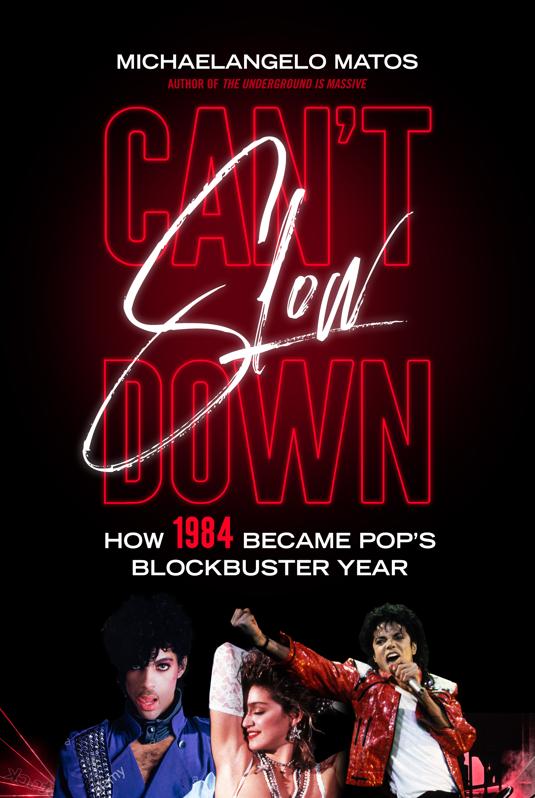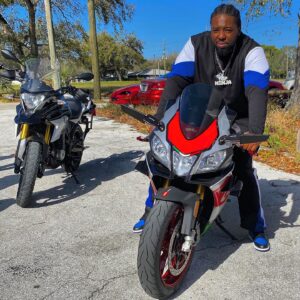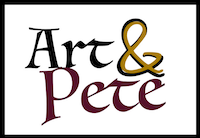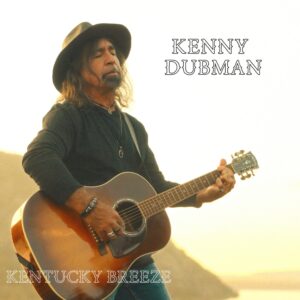
The Jacksons performing at Comiskey Park in Chicago, Illinois, October 11, 1984. (Photo by Paul … [+] Natkin/Getty Images)
Getty Images
If there was a year during the 1980s that represented the apex of music and pop culture, it would have been easily 1984. That particular year saw a number of major artists—most notably Prince (Purple Rain), Madonna (Like a Virgin) and Bruce Springsteen (Born in the U.S.A.)—put out era-defining, blockbuster albums. And Michael Jackson’s Thriller still dominated the album charts in 1984, even though it was released about two years earlier. But it wasn’t just music that was thriving in 1984—such things as films (Ghostbusters, Beverly Hills Cop, Footloose) and technology (the advent of the personal computer, the compact disc and the VCR) benefitted as well.
1984’s musical and cultural highlights form the basis of author Michaelangelo Matos’ newly published book Can’t Slow Down. For the 1980s fan in mind, this voluminous survey chronicles the entire year through the lens of unique music-related events and moments: from the Second British Invasion of America and the 1984 Grammy Awards; through the New Music Seminar and the inaugural MTV Video Music Awards; to the behind-the-scenes anecdotes of the Band Aid and USA for Africa charity singles. In between are stories about the key artists who achieved success in the genres of rock, pop, alt-rock, metal, hip-hop, country and jazz—weaved in with the political, economic and cultural climate of in 1984.

Cover of ‘Can’t Slow Down’ by Michaelangelo Matos.
credit: Hachette
According to Matos, who wrote 2015’s The Underground Is Massive, the idea for a music and cultural history book spotlighting 1984 began over 10 years ago. “I always really liked books about years, not just music books,” he explains. “One of my favorite books is Andreas Killen’s 1973 Nervous Breakdown. I read that back to back with Ladies and Gentlemen the Bronx Is Burning, about 1977 in New York. I always thought of [Can’t Slow Down] as in that lineage.”
“The idea for me was I want to explain it in a way that you didn’t have to already know,” Matos also says. “I was going through the material and the research, and being like: ‘Why doesn’t anybody know this? This is incredible.’ And there were loads of that stuff.”
One of the main themes from Can’t Slow Down is crossover—about established artists who recorded music around this period that appealed to a bigger and broader audience, such as in the case of Jackson, Prince and Springsteen. “You have a lot of music being made in this mid ’80s period that is attempting very strongly to reach beyond its own boundaries and formats on radio. I think why that moment in music history feels relevant now because it did that first. Now nobody thinks about genre boundaries and limiting themselves.”

UNITED KINGDOM – JANUARY 01: Photo of DURAN DURAN; L-R: Roger Taylor, John Taylor, Nick Rhodes, … [+] Simon Le Bon, Andy Taylor – posed, studio, group shot, 1984/1985 – IMAGE REVERSED! (Photo by Fin Costello/Redferns)
Redferns
Another subject touched in Can’t Slow Down is the shift in fortunes of the British pop acts going into 1984. The year before, America saw a flood of them such as Culture Club, Duran Duran and Eurythmics finding success on the Billboard charts and MTV. Now these stars were being challenged by their American counterparts who co-opted their photogenic personalities and New Wave sound.
“It’s already receding from where it had been half a year earlier,” explains Matos. “In 1983, it was constantly British. Then by the beginning of ‘84, it dropped off by about a third. A lot of that music was loathed by American music writers. When you look at The Village Voice poll from ‘83, it’s all this roots rock [X, Blasters, Richard Thompson, Los Lobos]. The critics’ poll was always geared towards that. The Second British Invasion simply angered and offended those kinds of critics, and there was really evil, mean dumb s*** being written about them.
“I think some of that [British New Pop] music is really ill-advised. But I also gained a real newfound respect for Duran Duran, especially. Those guys mean it. They had a mission and accomplished it. “Hungry Like the Wolf” is a great record—you have to be on Mars not to know that. What you get out of [Duran Duran bassist] John Taylor’s book [In the Pleasure Groove] is how much he loves what he does and how grateful he is to have his fans. That band likes their fans.”

Michael Jackson & Quincy Jones at the Grammys in Los Angeles, California on February 28, 1984 in Los … [+] Angeles, California (Photo by Barry King/WireImage)
WireImage
Without question, the most popular artist in 1984 remained Michael Jackson, whose Thriller album not only earned eight Grammys but he also took part in the ill-fated Victory tour with his other brothers as the Jacksons. “Thriller was number one through April,” says Matos. “It was the second longest at number one for the year—only Prince was longer—and it was still the best-selling album of the year. It still sold more copies that year than everybody else, including Prince, who sold 9 million records. Michael Jackson absolutely, utterly and completely dominated the year. It wasn’t even that close.”
Along with Jackson, two other acts solidified their popularity in 1984, as told in Matos’ book. The first was the aforementioned Prince, whose Purple Rain movie and album finally made him a mainstream superstar. It was the culmination of a career that began with his 1978 debut album For You as he first broke through with a Black audience.

DETROIT, MI – NOVEMBER 4: American singer, songwriter, musician, record producer, dancer, actor, and … [+] filmmaker Prince (1958-2016) performs onstage during the 1984 Purple Rain Tour on November 4, 1984, at the Joe Louis Arena in Detroit, Michigan. (Photo by Ross Marino/Getty Images)
Getty Images
But, as Matos explains: “He was also as much as present in the rock discos. He had a foot in New Wave, and that’s very important because that sets the stage for the crossover. Starting with Dirty Mind, there was a very conscious effort to pitch him in that direction. The idea was, they would have him play a rock club on the off nights when he was touring with Rick James. The Rick James crowd was thought to be majority Black, probably by a lot. The idea was you couldn’t go to a disco, but you can go to a rock disco. In Prince’s case, he has a substantial Black following. But the crossover starts to happen in ’83 with “Little Red Corvette.” The crowds turn totally different. The crowds at the 1999 tour went from very Black to very mixed.”
The other artist who had a spectacular 1984 was Madonna, who was coming off the success of her self-titled debut album in 1983 and later followed that up with the even-bigger record Like a Virgin. In between she cemented her stardom with her now-legendary performance at the first MTV Video Music Awards, proving to naysayers that she was not a novelty, flavor-of-the-month act.

NEW YORK – SEPTEMBER 7: Madonna performing on the 1984 MTV Video Music Awards at Radio City Music … [+] Hall in New York City, September 14, 1984. Photo by Frank Micelotta/Getty Images.
Getty Images
“She was already on the way there commercially because the records were selling,” Matos explains. “Folks in radio broke Madonna—MTV didn’t not break Madonna. “Holiday” was not an MTV hit, but “Holiday” is the standard. Of all the songs on that first record, “Holiday” is what people went for, and for good reason because “Holiday” is magnificent. That was very much where she was coming from.
“That whole thing about Madonna throughout the ’80s is that she was lauded in great part because of her painstaking work ethic [aligned] with the whole ’80s ethos. The same thing with Springsteen and his new buffness, and the same with Prince with his non-stop recording. That manifests with Michael n the strenuousness of the gadgetry—he worked so hard to try to blow you away.”

NEW YORK, NY – CIRCA 1984: Bruce Springsteen in concert circa 1984 in New York City. (Photo by Robin … [+] Platzer/IMAGES/Getty Images)
Getty Images
For a number of older artists who were successful in the 1960s and 1970s, 1984 was also a period of reinvention. They included the likes of Van Halen (1984), Tina Turner (Private Dancer), Don Henley (Building the Perfect Beast) and Chicago (Chicago 17) who connected with a new generation of fans via sleek-sounding records and MTV. Meanwhile other artists like David Bowie and Paul McCartney put out lackluster releases (Tonight and Give My Regards to Broad Street, respectively) that year.
“I think Don Henley was successful,” Matos says. “[The video for] “The Boys of Summer” changed his image in a good way—that made him relevant to kids like me who had no real history with the Eagles. ZZ Top [with their 1983 album Eliminator] almost certainly did it better than anybody because they allowed themselves to be basically hood ornaments. They were not the stars of the videos—the women in lingerie and the car were the stars. They were the best supporting actor times three.”

LONDON, UNITED KINGDOM – JULY 13: Finale of Live Aid on July 13, 1985 in London, United Kingdom. … [+] (Photo by FG/Bauer-Griffin/Getty Images) 170612F1
Getty Images
The book concludes with the massive Live Aid in July 1985, a turning point event in that it not only raised money for African famine relief, but it unofficially marked the end of a golden period in pop music. After that, things sort of went downhill both creatively and commercially for a number of those artists who had hits in 1984. “It was changing into more backroom than artist driven,” says Matos of the post-Live Aid era. “That really comes through in the late ‘80s is via song doctors: Diane Warren, Desmond Child and those folks wrote big hits for everyone. In the later ‘80s, the big hits came from a small number of people.”
He adds: “I remember vividly in ’85 going: ‘What happened? ‘What happened to the radio?’ It died overnight. So many of these artists who released big albums and big hits in ‘84, their next records stunk. That was the sound of the time: treble heavy and very loud and unbearable. There was no subtlety. What had been exciting about ‘84, the kind of splashy drums and the big synths of a record like [Van Halen’s] “Jump”—suddenly that was a formula. It wasn’t that somebody did it because they felt it was exciting and it goosed things—they did it because that’s how you had to do things in order to get a hit.”

Eugene H. Louie Photograph OldTech 10012000 Paul Zurakowski, 73, (cq name) listens for that … [+] familiar sound of a computer booting up at the the fourth annual Vintage Computer Festival held this weekend in San Jose. Zurakowski bought his first computer in 1984, and it was the first Macintosh model Apple ever produced on the right which didn’t even have a hard drive, requiring a 400k floppy drive to be iinserted each time a user wanted to use the computer. The computer in the middle of the picture is Apple’s first “portable” computer (a precursor to the powerbook). The portable computer base price was around $6,500. and went to about $10,000 fully loaded. The processor runs at a blazing 16 megahertz, according to Zurakowski who has about 19 vintage examples ofApple computers. (Photo by MediaNews Group/The Mercury News via Getty Images)
MediaNews Group via Getty Images
Matos says 1984 was a central year in all fronts not just the music, but how technology would shape its future for decades to come. “The compact disc really takes hold in ’84. By that point, the VCR is in a lot of American homes and rising all the time. It was just Ground Zero for so much else, technologically in particular. So that affects the music. There is a futurism to that time that is quaint in retrospect, but it was really the beginning of the technological revolution. You have that amazing bit in the introduction [to my book] of Quincy Jones talking to Radio & Records magazine basically predicting Spotify.”
Compared to other music periods, the 1980s have been short shrifted when it comes to critical studies. But with Matos’ book and others in recent years, that period’s exciting music and times have been now depicted in an important and accurate historical light.
“The thing that I often find is when especially record biz people talk about the ’80s, it isn’t they don’t tell the truth,” Matos says. “There is a feeling of embellishment a lot of the time. People often don’t have good memories because they did all that coke. You see that quote a lot in people: “Oh, I don’t remember that at all. Did I do that?’
“Certainly reading the [trade publications] the way I did is a good way to harvest names. I felt there’s so much here that’s verifiably interesting and good, and some of it was just about the biz and the personalities, too. Once I had all of that in my hands, I thought: ‘This is the way to go. This is so fascinating.’ Nobody thinks of that as an interesting era. I find that era completely and endlessly interesting.”






